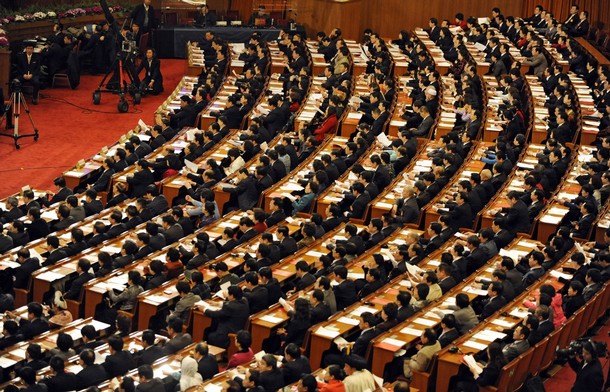The Reserve Bank foreshadows two decades of strong growth in the resource sector, driven by continued rapid economic expansion in China, but does not follow the argument to its logical conclusion that China will become the dominant economic power in East Asia. Similarly, even as the Defence Department states that it is strongly aware of the China threat, it is setting a defence strategy on the basis that American military leadership will remain unchallenged in the near future.
The shakiness of the latter judgement is illustrated by Kishore Mahbubani’s book The New Asian Hemisphere. Mahbubani makes the point that 90 per cent of the world’s PhDs are already located in Asia. In this context, it is unrealistic to expect America to remain the pre-eminent military power for the near future. As to China’s economic might, the rolling financial crisis since 2008 has discredited American institutions and authority. The only commercially viable parts of the US economy are a rapacious financial sector, a wasteful military industrial complex and an unaffordable, toxic health industry.
On a broader level, and more importantly, most analysts have failed to appreciate the successful system of bureaucracy in East Asia. This system has historically subordinated the marketplace to the strategies of a highly educated administrative class, and has been extraordinarily successful over the past 50 years. ‘Capitalist’ Japan is the butt of Western criticism for the government’s large borrowings from the Japanese people. Yet, after two decades of recession, the country remains the world’s second or third major economy, has large foreign reserves and no external debt. China has also been continually underestimated – books such as The Coming Collapse of China by Gordon Chang, and The Writing on the Wall – China and the West in the 21st Century by Will Hutton, typify the disdain of many analysts for China’s market model. But contrary to these expectations, ‘Communist’ China continues to seize strategic leverage in most global marketplaces.
Where should the West start in understanding East Asia?
First, there must be a determined attempt to understand the culture that underpins East Asian economies. East Asia is guided by national bureaucracies that can only be understood in the context of Confucian and related traditions. They are incomprehensible if approached with tired Enlightenment stereotypes that pit public and private sector against each other. Western denial of this reality has gifted a large strategic advantage to East Asia.
Second, the West must attempt to understand the new regional architecture of the East Asian region. China is at the centre of three organisations that could possibly herald a transition to a very new global order; ASEAN + 3, the Shanghai Cooperation Organisation, and the BRIC grouping.
ASEAN + 3, consisting of China, Japan, Korea and the 10 ASEAN nations, has the potential to become the centre of global education, finance, technology and production, restoring an order that existed for several millennia until after 1800. The Shanghai Cooperation Organisation of China, Russia, Kazakhstan, Kyrgyzstan, Tajikistan and Uzbekistan, with India, Pakistan, Iran and Mongolia as observers, is currently concerned predominately with economic ties. But over time, this powerful grouping of states has the capability to establish a new Eurasian centre of power, marginalising the Atlantic world. Similarly, the BRIC grouping of Brazil, Russia, India and China may facilitate a new international power balance, with Latin America included at the expense of the North Atlantic powers.
Third, the West must take a hard-headed approach to Chinese capabilities. China has commenced planning the construction of rail lines and trains able to span the Eurasian continent before 2020. It is also showing less and less patience with what it regards as American surrogates in Tibet and Xinjiang. Once China accedes to US pressures to revalue the yuan, the US and China will be positioned on a theoretically equal economic playing field. In this context, analysts will re-evaluate the work of Washington’s 35,000 corporate lobbyists against East Asia’s Confucian strategists. The conclusion that East Asian Confucianism is a viable model of government will be inescapable.
In sum, if the early demise of Western enlightenment dominance is to be avoided, it is time for all concerned to take a proper look at the true direction of international power – towards East Asia. An examination of East Asian Confucian values must be front and centre of this analytic realignment.

